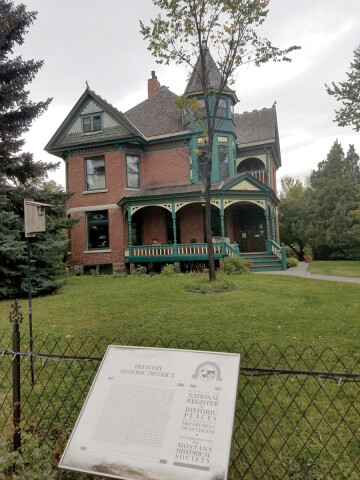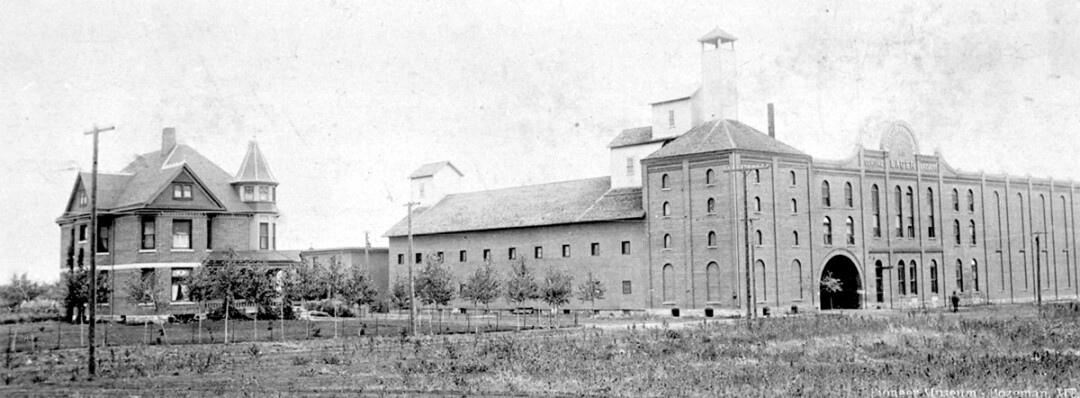Historic Preservation in Bozeman?
Julia Strehlau-Jacobs | Saturday Oct. 1st, 2016
There are many fascinations with travelling abroad, including various languages, cultures, culinary food, and diverse architecture. Often times the architecture distinguishes a location through its old age. When thinking of Europe, the first associations are historic, iconic buildings that are characteristic for certain cities: The Colosseum in Rome, the famous Louvre Palace in Paris, or the Tower of London. All of these historic structures are witnesses of time and messengers from the past. We should consider how it is that they are still around today. These buildings have been preserved, reconstructed or maintained through regulations and laws that are defined by the concept of historic preservation. Similar to the National Park Service, which preserves natural environments and historic places for future generations, historic preservation takes place on the local level and it affects mostly everyone. Here is how.
Personal identity, or everyone’s definition of themselves, usually entails a sense of belonging to a certain place. This could be the hometown where you went to school, learned how to drive and had your first job. It could also be a place that you chose to be home after you were able to decide for yourself. The memories you connect with a period of time in your life are tied to that place. The old school building, the mall, or other places bring up memories and thereby serve as your personal place of memory. It might even go beyond personal identity. Places can be tied into family history as well. There are many families that have passed on the old Victorian House to the next generation. When great-grandmother, grandmother and father have been born in the exact same house, this house contributes to family history and again becomes a place of memory.
Places can become markers of identities for whole communities. Churches, schools, shopping malls or the park by the pond provide places for a larger number of people to enjoy free time or Sunday mornings. These places provide a sense of collective memory. Shared history and places define us as a people and it is important to preserve these places. All of these things serve as a basis for historic preservation.
As times change and communities grow vibrantly or diminish in size, the use of places is changing as well. Some become obsolete due to economic advancement; the old school house might have become too small or the church might have closed because the historic structure of the building started to fall apart. These things can cause the appearance of a town or city to change dramatically. This can be significant, and city development can destroy places of memory.
Bozeman is a town in what used to be considered ‘The Wild West’- a period of America’s history that was very fascinating for people from the East and abroad. It was a town on the American frontier. Therefore, its history and buildings that are left from those days have quite a story to tell. As part of the national narrative of the United States, Bozeman serves as a great example. Just recently it has been considered the best place to live in the United States! The best place! Now, the State of Montana’s most famous slogan “the last best place” can be applied to Bozeman as well. Despite this great honor, Bozeman also ranks in the first three fastest growing small cities in the United States. I’m sure all of us have realized construction is going on all around town. But this has an effect on the historic make-up of the city. The shortage of housing causes old structures to be remodeled or even torn down. And, that is a problem.


As pointed out earlier, a city is a continuously changing organism. People move in and out of the community, babies are born and people pass on. The economy is changing. Old manufacturing buildings become unused and big department stores dominate the picture. Everyone has different requirements in the development of the city, and there are many needs to be balanced. But what to do with obsolete structures? The entities that exist in order to preserve historic structures now have to invest in time and ideas in order to reinvent the old building and make it functional for contemporary use. The trick hereby is not to lose the history of the building. Bozeman’s Main Street serves as a great example. Many of the buildings there have been remodeled and repurposed. Most of them are occupied with local small businesses and galleries. Others, the Masonic Temple building for example, are being remodeled and updated to new standards. The original façade will be made visible again as well. This building is also part of the national narrative, as the freemasons have been a part of the country from the first day.
Modernizing an older building is just one part of the equation. It also has to be made accessible and valuable for the contemporary generation. If that goal is achieved, then it is not just ‘any old building’ - it gains a place in personal identity development as well. It has become important to a generation that was completely detached from it before.


Historic preservation is also focused on telling the stories of people that were not as influential and fortunate. Here in the American West, the traces of Native people can be found everywhere if you look closely. The location of the first Crow Agency just nine miles east of Livingston can serve as another example. This place was one of the first establishments and a witness of the reservation period. It was a horrific time for tribes in the West. However, in order to remember the story of what was done to the tribes by the federal government, this place was recently purchased by the Archeological Conservancy in order to preserve the history behind Fort Parker. An important part of what Historic preservation also does is the conservation of places that are painful to the cultural memory of a society. Battlefields, memorials, or cemeteries are places that deserve recognition and preservation because they also have shaped the society of today. Minorities, women, the poor, and the working class are all groups that are claiming ties to historic locations that define their past.
The topic of historic preservation is of great importance to Bozeman at this juncture in time. The high influx of people, businesses, and wealth puts a lot of pressure on city officials. Decisions have to be made quickly and contractors, builders and real estate agents act accordingly. As this is happening, historic structures might seem more of a burden to city developers than a blessing. Therefore, public awareness needs to be raised. Resident groups have come together here in Bozeman in order to raise concerns and exchange opinions with the city and with neighbors. The Bozeman Preservation Advocacy Group will be hosting a Sack Lunch Series on the First Fridays of the month starting in October at the Public Library. These meetings will inform about Bozeman’s Historic Districts and resources. Hopefully, these interest groups will make an eye-to-eye conversation with city officials possible. Historic preservation is essential to keep Bozeman the charming small town of the American West it still is today. Make sure to get involved.
| Tweet |
